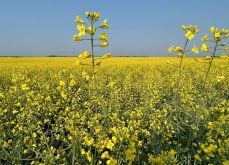REGINA – When cattle show mineral deficiencies, it is no time to be cheap or slipshod with tests, a beef cattle specialist told Saskatchewan veterinarians at their annual convention.
Forage tests that only reveal the level of a specific mineral or do not cover a broad range can disguise serious problems, said Kansas State University nutritionist Larry Corah.
“The copper may look fine, at five or six parts per million, but you’re really missing where the problem is – in excess molybdenum and iron,” he said of one example of a forage crop that had so much of the copper-blocking substances that cattle relying on the field would have had severe copper deficiencies.
Read Also

StatCan stands by its model-based crop forecast
Statistics Canada’s model-based production estimates are under scrutiny, but agency says it is confident in the results.
He said he didn’t think producers should test their pastures on a yearly basis, but if health problems arise that are difficult to explain, testing suspect pastures make sense.
Corah said nutritionists have only recently begun to accept that a diet producing good growth and reproductive results may still not satisfy the trace mineral needs of cattle.
Trace minerals might not add to growth or breeding performance, he said, so a deficiency might not be readily apparent.
But problems can arise when well-growing and breeding animals are faced with diseases and other factors that test their immune systems, he said.
Veterinarians and producers should ensure enough trace minerals are reaching their cattle, but should beware of overloading them.
“Too much can be as bad as too little,” he said, recalling one cattle farmer who decided to add copper supplements to the cattle feed.
Died of copper overdose
Without the veterinarian knowing, he later also put copper boluses in his calves.
Ten to 25 percent of them died from copper overdoses, a figure borne out by other producers who had also doubled up the copper deficiency treatments.

















